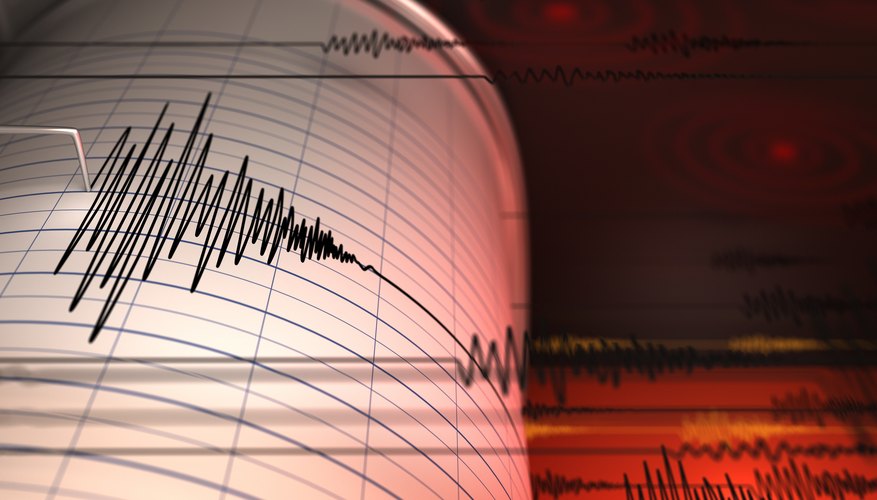
.............................................................................................
How Does an Earthquake Happen?
By Jenny
Green
An
earthquake is a shock wave that radiates to the Earth's surface from
underground.
Causing
a range of effects from unnoticeable, mild tremors to violent, prolonged
shaking, an earthquake is a natural phenomenon that occurs frequently only in
certain areas of the world.
The
place where an earthquake begins underground is called the hypocenter, and the
area on the Earth's surface directly above the hypocenter is called the
epicenter and receives the most powerful shock waves.
TL;DR (Too Long; Didn't Read)
Earthquakes develop when tectonic plates, the massive
"jigsaw pieces" that make up the crust of the earth, move suddenly,
sending shockwaves through neighboring area.
Earth Movement
Movement in the Earth's crust causes an earthquake.
The
Earth is made of an inner core, an outer core and a mantle, and the final layer
is a thin crust covering the mantle, which is the surface of the Earth
including all the oceans and continents.
The
crust is made of separate rocky portions called tectonic plates, which lie on
the mantle like pieces of a jigsaw puzzle.
But
the jigsaw puzzle is mobile, and the plates move around. Some slide past each
other horizontally, some push together and force the ground upward, some slide
beneath another plate and some pull apart.
Whenever
a tectonic plate moves suddenly, this causes an earthquake.
Tectonic Plates
The sudden release of friction and pressure between tectonic
plates causes an earthquake.
Tectonic
plates are made of rough rock and cannot slide past each other smoothly.
Friction prevents movement at the plate edges while the rest of the plates
continue to move, causing a buildup in pressure.
When
the pressure overcomes the friction, the plates move suddenly, and shock waves
from this sudden movement radiate through rock, soil, buildings and water.
Usually,
small foreshocks occur at first, followed by one big mainshock. Aftershocks
follow and can continue for weeks, months or even years.
Fault Lines
Fault lines are the areas where two or more tectonic plates
join, and it's in these areas most earthquakes occur.
Well-studied
fault lines include the San Andreas Fault that runs down the West Coast of
North America and lines between Australia and Papua New Guinea, as well as in
New Zealand, Tonga, Japan and Taiwan.
Earthquakes
can also rarely occur in the middle of tectonic plates.
Scientists
aren't yet able to predict earthquakes, but people living near fault lines can
help protect themselves by living in earthquake-protected housing and
practicing earthquake drills.
Earthquake
Effects
An earthquake damages buildings and land, causes tsunamis
and has many other disastrous effects.
Violent
shaking from an earthquake collapses buildings, which causes the most deaths
and casualties, and destroys power lines and ruptures natural gas supply lines,
causing fires.
Land
can also collapse or pull apart, causing more buildings to fall.
Tsunamis
occur after an earthquake on the ocean floor. The water shock wave travels
through the ocean until it dissipates or meets land.
If
the wave meets land, the water piles up, creating a single wave or a series of
large waves that sweep inland, causing death and destruction.
About
the Author
A
graduate of Leeds University, Jenny Green completed Master of Arts in English
literature in 1998 and has been writing about science since 2007. Green's work
appears in Synonym, Sciencing, and other websites and ezines


No comments:
Post a Comment